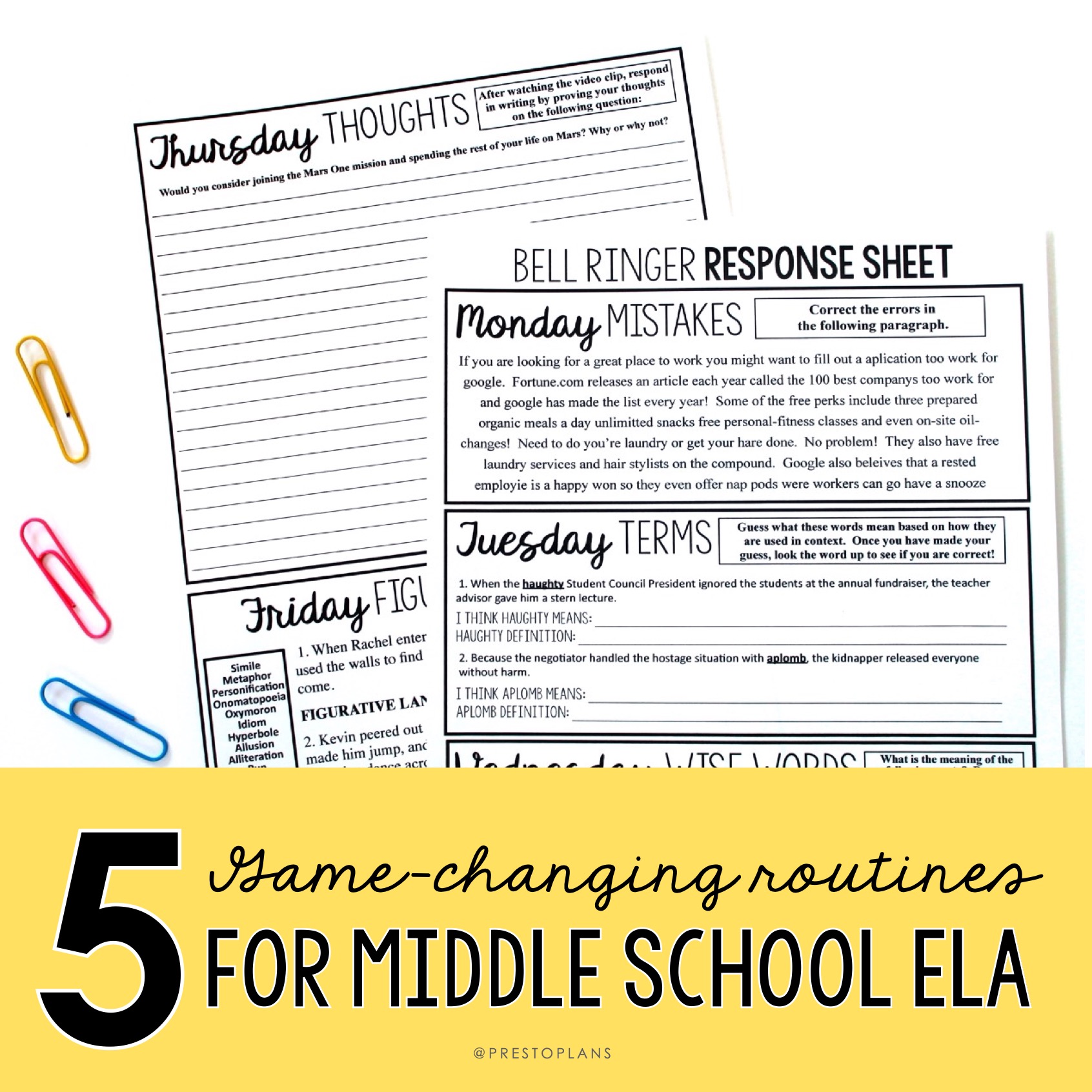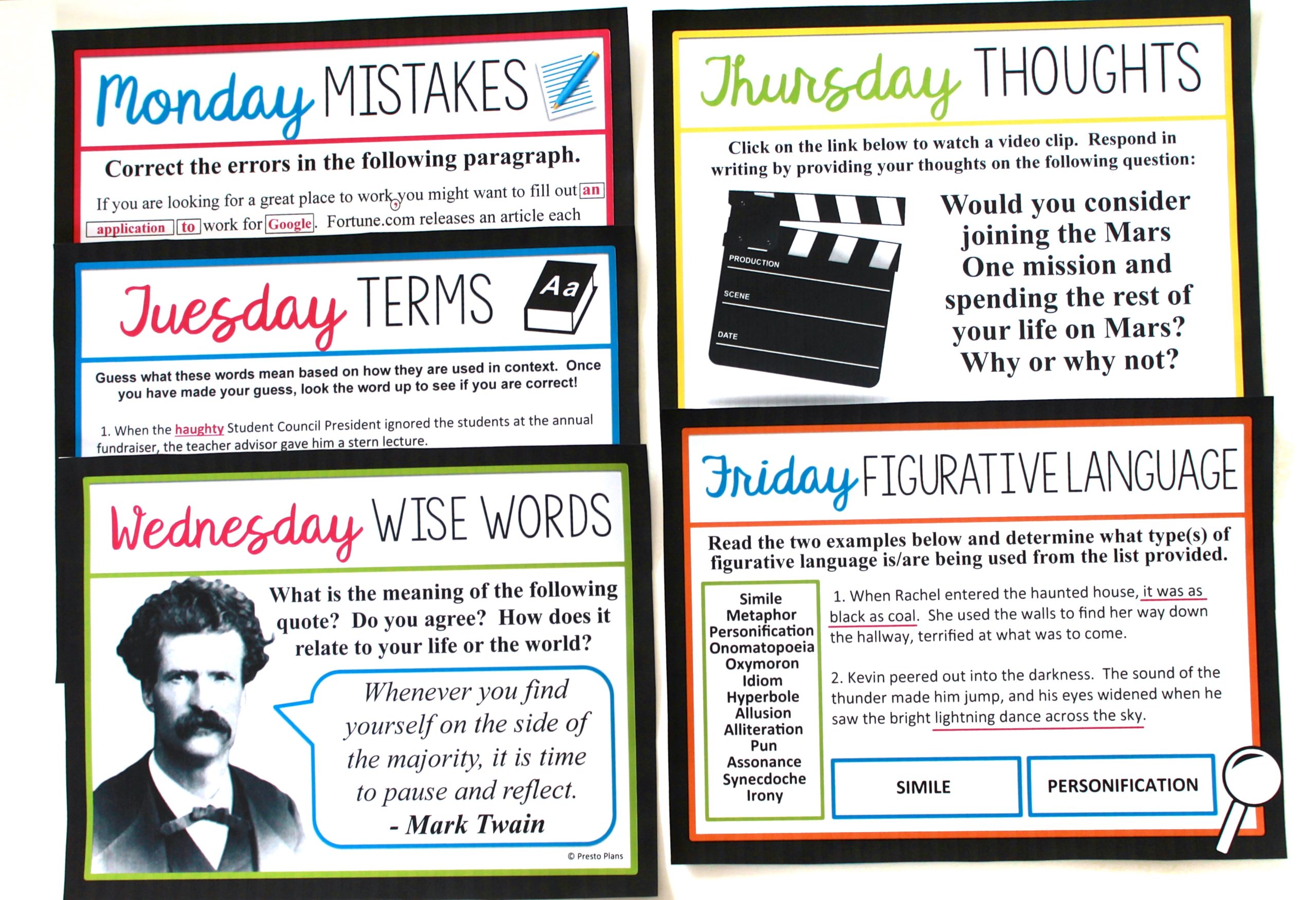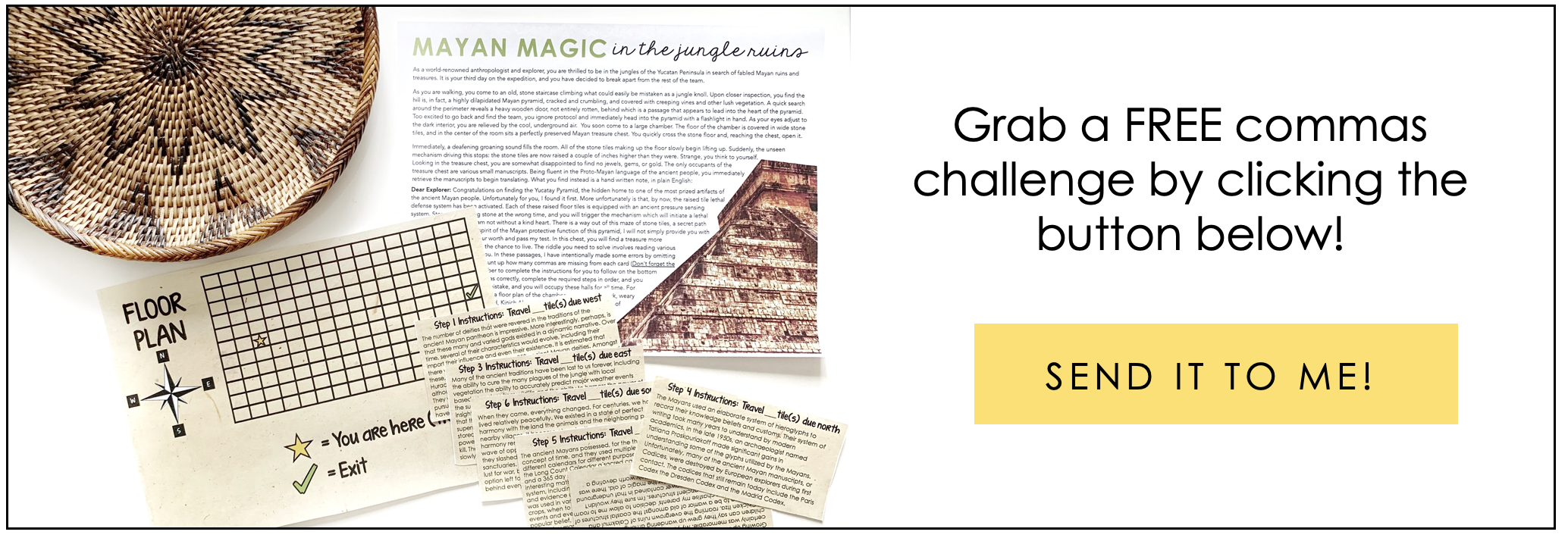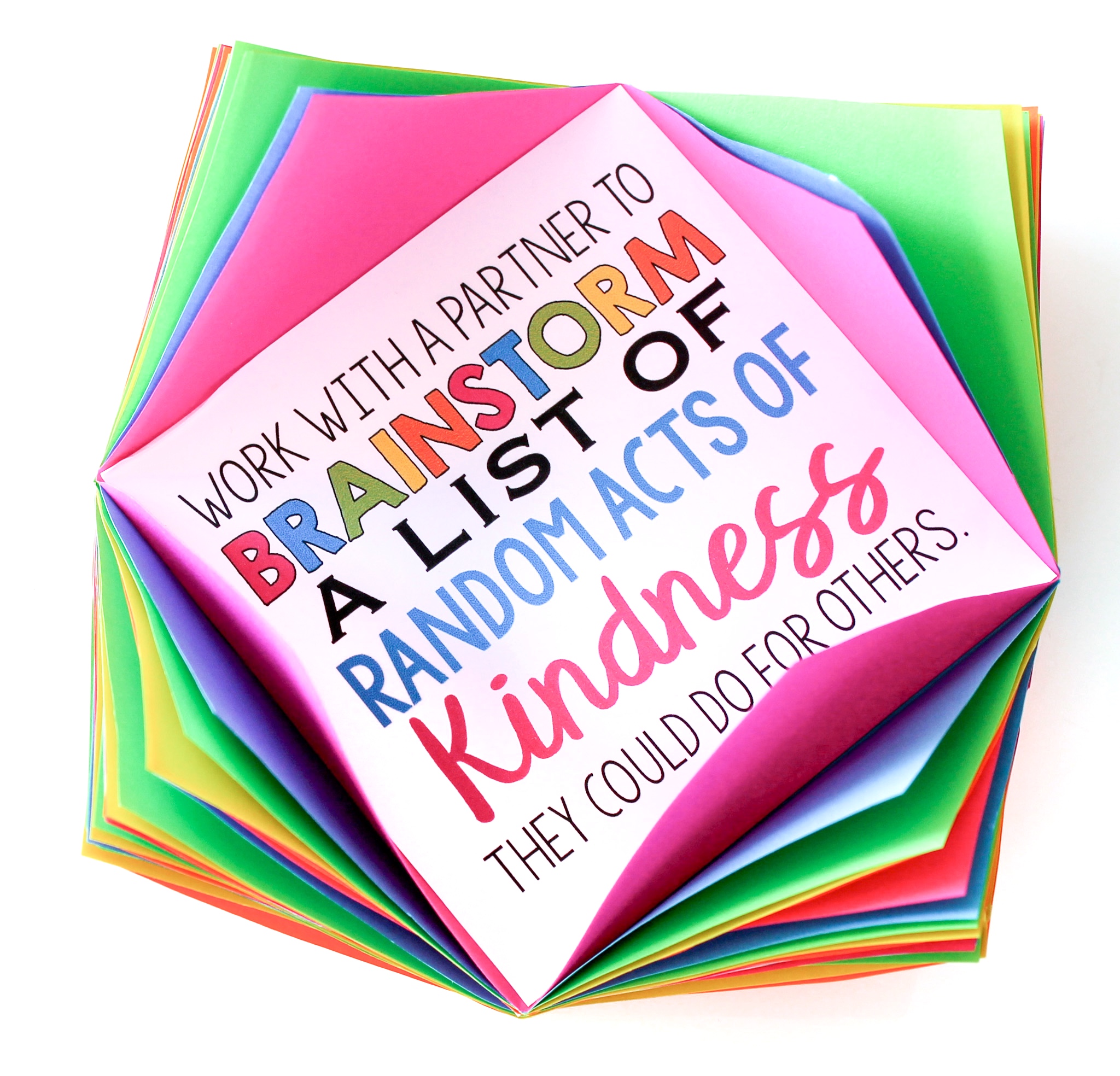PRESTO PLANS
Sent straight to your inbox
CLICK HERE TO ACCESS
Sign up to receive 10 ready-to-use ELA resources your students will love!
10 FREE ELA RESOURCES

5 Game Changing Routines for Middle School ELA
Are you someone who likes having a routine, or do you mostly prefer spontaneity? Personally, I like to allow for a mixture of both in the classroom. Even though establishing effective routines can seem to take a lot of time and effort, they end up saving so much more time and effort in the long run. In an effort to save you time, I wanted to take a moment to describe 5 game-changing routines for the middle school ELA classroom.
1. Bell-Ringers
Bell-ringers are short activities that you can use at the beginning of every class—right after the bell rings! They prompt your students to complete small tasks, questions, or activities for each day of the week, Monday to Friday.
These make for game-changing additions to your daily routine because of their unique dual purpose. Bell-ringers serve to set the tone and calm the chaos right at the beginning of class while also helping your students to develop their ELA skills at the same time. They’ll buy you an extra 5-10 minutes every day while also helping your students hit the standards.
I like to use a variety of bell-ringers so that students won’t ever get bored. Here are some of the types of bell-ringers you might consider using in your class:
- Locate figurative language
- Improve word choice
- Use a picture to spark narrative writing
- Have a short discussion/debate with a partner
- Watch and respond to a short video clip
- Infer the meaning of new words in context
- Correct grammatical errors
Bell-ringers provide a reliable and consistent sense of structure to the beginning of the class. These will quickly become part of your students’ daily routine. In my experience, they’ll often get started on these without being prompted, sometimes even before class begins. If you’re interested, you can try four weeks of bell-ringers for FREE by clicking here.
Ready to get started with using these bell ringers? Find the right full-year set for you here: Browse Presto Plans’ Bell-Ringer Sets
2. Grammar Challenges
Have you ever tried doing grammar challenges with your class? If not, you should definitely consider it. Grammar challenges help you gamify your grammar, making an extremely fun and engaging class activity out of something that traditionally has been…well…not extremely fun and engaging. 🤷🏼♀️
Grammar challenges typically involve creative narratives that prompt students to use their grammar skills in order to solve a related puzzle or escape room-like activity. They just check so many boxes for me which is why I like to integrate them on a routine basis. They’re modern, interactive, and they engage different learning styles. Your kinesthetic learners will love the hands-on, competitive nature of these grammar challenges. You can try one for free here!
Most importantly, though, grammar challenges are easy to add to your weekly routine, and having a bunch of these on hand will be a real game-changer for you and your class. You might do a grammar challenge once a week. Maybe you’ll have a “Grammar Challenge Thursday,” for example, covering a different grammar rule each time.
Each grammar challenge is creatively unique, and therefore, doing them in weekly succession won’t ever feel repetitive. After doing them once, you and your students will look forward to them!
3. Reading and Writing Conferences
I must admit that when I first started teaching I did not take the time to conference with my students. There were only so many hours in the day and I wasn’t sure how to make the conference productive enough with the short amount of time I had. But it didn’t take me long to realize that conferencing is such an important part of the literacy curriculum. Having one-on-one interactions with every single one of your students, even if it’s just for a short few minutes, can be invaluable in forming a connection and providing personalized feedback.
If silent reading time is already part of your routine, then reading conferences are especially easy to implement. You can occasionally pull individual students aside during this time while they’re already in the mindset of reading and the other students are not requiring your attention. As for writing conferences, these can similarly be implemented into your routine by following the same approach. You might meet with individual students briefly at the beginning of class while the rest are completing a bell-ringer, for example.
Reading and writing conferences were a game-changer for me. By having consistent but short one-on-one discussions with my students (even for 3-5 minutes at a time), I was able to gain deeper insight into the challenges that students are having as a whole.
4. Extended Silent Reading
It’s common for us English teachers to have our students engage in a short and focused reading period at the beginning of class. I emphasize the word short because getting our students to sit silently at their desks, honestly engaged in a text for any length of time at all can feel like pulling teeth. I know this, and still, I am going to encourage adding longer periods of silent reading time to your routine.
To do this, we need to revamp the conditions for independent reading time—or rather, allow the students to help set the conditions themselves. Put the onus on them a little. Plan a time ahead to go over what independent reading time will look like with them on the board. Have students be honest with themselves (and you) about what will work to address any issue before it begins.
But if you’re going to get students to look at independent reading from your perspective, you will need to also consider theirs, and this might involve letting go of some of your own ideas of what independent reading time has traditionally looked like. Here are some ideas of how you might meet them halfway:
- Give each student different book options.
- Allow students to sit where they choose.
- Allow students the freedom to move around.
I encourage you to do a practice run of your silent reading routine with your students. This way, you can be open to trying out different ideas knowing that they will be put to the test first!
5. Community Building Activities
The last routine I want to share with you has to do with building your classroom community. It’s common for us to dedicate time for community-building activities at the beginning of the school year. But those kinds of class activities tend to quickly fall in priority to the course curriculum when it gets busy—and, as you know, it gets busy fast…
That’s why I encourage you to carve out time for intentional community-building activities throughout the semester. Community building activities serve to build morale among your students, something that’s especially important when things do get busy. They also improve classroom management. They help you build a stronger connection with your students which makes them less likely to misbehave!
Community building activities don’t need to be related to your ELA curriculum. In fact, they can sometimes have a greater effect if it’s they’re distinguished from your class curriculum altogether. Do these activities with the intention of building a growth mindset in your class or use community-building challenges on a regular basis.
Leading team-building activities on a weekly—or even monthly if time is an issue—basis is a real game-changer. They can be used as a bell-ringer at the beginning of class or as a short activity at the end of class. I like to hang a bulletin board in my class consisting of a bunch of colorful envelopes with prompts with challenges inside!
I hope that these game-changing routines for middle school ELA help you grow with your students. Best of luck implementing them in your class, and please don’t hesitate to reach out if you have any questions!
Search the blog for what you are teaching
GIVEAWAYS
sent straight to your inbox!



share this post